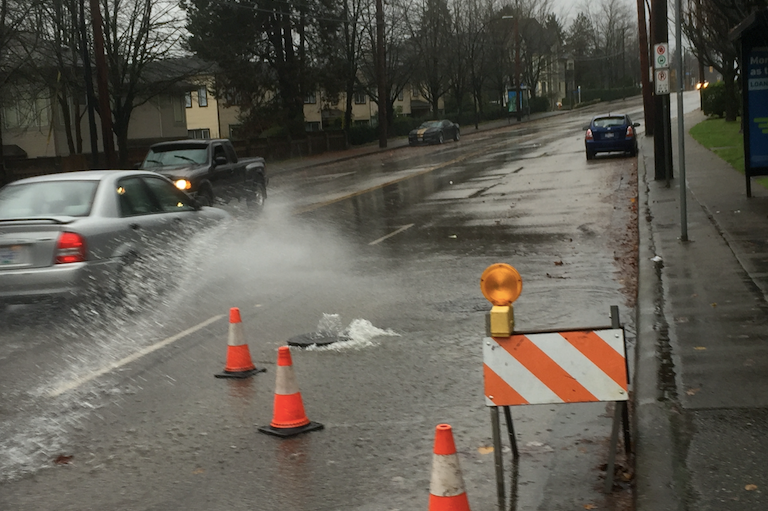In what might be a record-breaking deluge, Coquitlam saw most of its November rainfall in just 37 hours, resulting in flooded local trails, road closures and sewage-tainted water flowing onto some city streets.
It was a day of firsts for Mayor Richard Stewart, who said he has never seen such high water in the Coquitlam River nor at Lafarge Lake.
River waters were forecasted to surge Monday morning (Nov. 15) and the effects could be seen throughout the region, but particularly in Port Coquitlam where the city made sand bags available to residents.
But the fast-running Coquitlam River may also have scoured out some newly-laid salmon eggs while it also damaged an outflow grate.
“We’re seeing some of the effect today, the outlet grate in the Grist Channel (in Coquitlam River) was broken by the water flows,” said Stewart.
But as the city dries up with a few days of sun and cloudy weather, the two-day rainstorm is a stark reminder of the need to build resilient systems to deal with climate change.
In just 37 hours, nearly 175 mm of rain fell on the city, according to the Burke Mountain rain gauge, approximately 70 per cent of the 252 mm average rainfall for the month.
Stewart said the rains were heavy and required around-the-clock response from city crews.
However, while they were able to flag sewage overflows on some Metro Vancouver trunk lines, they couldn’t stop them, resulting in sewage-tainted water flowing onto city streets.
Stewart said the problem is “endemic” throughout the region, but occurs in Coquitlam as well, particularly in older neighbourhoods like Burquitlam and Maillardville where home storm drains have been wrongly connected to city sewage pipes.
“The ground was so saturated that infiltration into the sewer lines produced the predictable result of surcharging of Coquitlam sewer and Metro Vancouver's trunk lines,” Stewart said.
And while the city is working on a program to identify those connections, it’s a costly and time-consuming job that is generally fixed when new development comes in.
Although 99 per cent of the bubbling fluid is water, there is some residual flow from people’s homes in the discharge.
One such sewage discharge was spotted on Brunette Avenue at Casey Street in Maillardvile and a Facebook post reported that toilet paper and other materials were flowing out of a sewer that blew its manhole cover on North Road at Jefferson Avenue.
On a day like yesterday, the overflows are unavoidable, said Stewart.
“The ministry of environment knows about it, we log them, we report them out, our goal is to reduce the number and to eliminate them but that takes decades. We’ve got work to do.”




